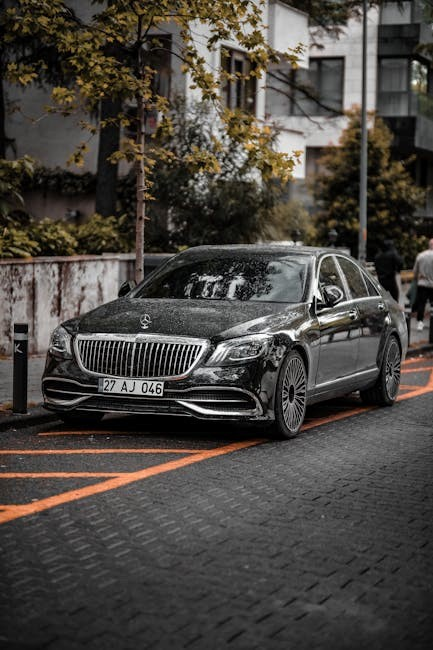An Exclusive Beat License Agreement is a crucial document ensuring producers and artists maintain clear rights and usage terms for musical compositions, protecting both parties’ interests effectively.
1.1 What is an Exclusive Beat License Agreement?
An Exclusive Beat License Agreement is a legally binding contract granting a single party (licensee) the sole rights to use a specific musical composition (beat) produced by another party (licensor). This agreement ensures the licensee gains exclusive usage rights, preventing the licensor from selling or licensing the beat to others. It outlines the terms, including usage permissions, copyright ownership, and payment details, providing legal protection for both parties. The agreement is essential for maintaining uniqueness and preventing unauthorized use, making it a cornerstone in music production and licensing deals.
1.2 Importance of the Agreement
The Exclusive Beat License Agreement is vital as it provides legal protection to both producers and artists, preventing disputes over ownership and usage rights. It ensures exclusivity, allowing artists to maintain a unique sound while protecting the producer’s intellectual property. The agreement clearly outlines terms such as payment, usage permissions, and distribution, fostering transparency and fairness. By preventing unauthorized use, it preserves the beat’s value and enhances the artist’s brand. This contract is essential for professional transactions, safeguarding both parties’ interests and promoting trust and long-term collaboration in the music industry.
Definition and Purpose
This section explains the concept of exclusive rights in music production and the reasons behind the agreement, serving as the foundation for understanding the document’s intent and application.
2.1 Defining Exclusive Rights in Music Production

Exclusive rights in music production grant the licensee sole authority to use a specific beat, ensuring no other party can exploit the work. This arrangement prevents the producer from selling or licensing the beat to others, maintaining its uniqueness. The agreement outlines the scope of these rights, such as distribution, performance, and reproduction, safeguarding both the producer’s ownership and the buyer’s exclusive usage. This definition is crucial for protecting intellectual property and ensuring the beat’s value remains intact, especially in high-profile projects where originality is paramount. Understanding these rights is essential for both producers and artists to navigate the music industry effectively.
2.2 Purpose of the Agreement
The purpose of an Exclusive Beat License Agreement is to establish a clear, legally binding framework that protects both the producer and the licensee. It ensures exclusive rights to the beat, preventing unauthorized use or distribution. The agreement outlines ownership, usage terms, and licensing scope, providing clarity and security. This protects the producer’s intellectual property while granting the artist exclusive access, which is crucial for maintaining the beat’s uniqueness and value in projects. The agreement serves to prevent legal disputes and ensure both parties understand their rights and limitations, fostering a professional and mutually beneficial relationship.

Key Parties Involved
The key parties in an Exclusive Beat License Agreement are the producer (licensor), the artist or buyer (licensee), and legal representatives ensuring the agreement’s enforceability and fairness.
3.1 The Licensor (Producer)
The licensor, typically the producer, retains full ownership of the beat and grants exclusive rights to the licensee. They are responsible for ensuring the beat is original and free from third-party claims. The producer cannot sell or license the beat to others once the agreement is executed, maintaining exclusivity for the buyer. In exchange for granting these rights, the producer receives compensation, which could be a one-time payment or recurring royalties. The producer’s role is crucial in safeguarding their intellectual property while providing the buyer with a unique sound for their music projects.
3.2 The Licensee (Artist or Buyer)
The licensee, typically an artist or buyer, acquires exclusive rights to use the beat for their music projects. They are granted permission to distribute, perform, and monetize the work, ensuring the beat is unique to their release. The licensee must adhere to the terms, such as crediting the producer and avoiding unauthorized transfers or sales. In exchange for exclusivity, the buyer often pays a premium, securing a distinctive sound that enhances their creative output. The agreement ensures the licensee’s rights are protected while respecting the producer’s intellectual property, fostering a fair and collaborative musical partnership. This exclusivity is key to maintaining artistic integrity.
3.3 Role of Legal Representation
Legal representation plays a vital role in ensuring that both parties understand and comply with the terms of the Exclusive Beat License Agreement. Lawyers or legal experts assist in drafting and reviewing the contract to prevent future disputes. They ensure that the agreement adheres to intellectual property laws and protects both the producer’s and the buyer’s rights. Legal professionals also help negotiate terms, clarify ambiguities, and represent their clients’ interests during the signing process. Their involvement guarantees that the agreement is legally binding and enforceable, providing peace of mind for both parties. Proper legal representation is essential for maintaining fairness and transparency in the deal.

Benefits of an Exclusive Beat License Agreement
An Exclusive Beat License Agreement ensures both producers and buyers benefit by providing clear ownership rights, protecting intellectual property, and offering legal security for exclusive use of the beat.
4.1 Benefits for the Producer
Producers benefit significantly from an Exclusive Beat License Agreement as it ensures they retain full ownership and control over their work. This agreement prevents unauthorized use or distribution, safeguarding their intellectual property. By granting exclusive rights, producers can negotiate higher fees, knowing the beat’s unique value to the buyer. It also eliminates the risk of multiple users diluting the beat’s impact, ensuring its exclusivity enhances the buyer’s project. Legal protections further secure the producer’s rights, providing clarity and reducing potential disputes. This arrangement allows producers to maintain creative integrity while benefiting financially from their work’s exclusive use.
4.2 Benefits for the Buyer
Buyers gain exclusive rights to use a unique beat, ensuring their project stands out without competition. This agreement prohibits others from using the same beat, providing a distinct sound that enhances their music’s originality. With exclusive rights, buyers can commercialize the track without worrying about legal conflicts or unauthorized use. The agreement also offers clarity on usage terms, ensuring buyers know exactly how they can utilize the beat. This exclusivity often leads to higher quality productions, as the beat is tailored to their specific needs, fostering a professional and polished final product that aligns with their artistic vision and goals.

Structure of the Exclusive Beat License Agreement
The agreement includes sections on exclusive rights, payment terms, delivery methods, and termination clauses, ensuring clarity and legal protection for both producers and buyers, with editable PDF templates available for customization.
5.1 Components of the PDF Document
The PDF document of an Exclusive Beat License Agreement typically includes detailed sections such as parties involved, grant of rights, payment terms, usage restrictions, and termination clauses. It also outlines the delivery method of the beat, ensuring both producer and buyer understand their obligations. Additionally, the document may contain signatures sections for both parties and a witness signature if required. These components ensure that the agreement is legally binding and protects the intellectual property rights of the producer while granting the buyer exclusive access to the beat for their projects. Printable and editable templates are widely available online for easy customization.
5.2 Differences from Non-Exclusive Agreements
An Exclusive Beat License Agreement differs significantly from a Non-Exclusive Agreement. In an exclusive agreement, the producer grants the buyer sole rights to the beat, preventing its use by anyone else. This ensures the buyer’s project stands out with a unique sound. Non-exclusive agreements, in contrast, allow the producer to sell the same beat to multiple parties, making them more affordable but less exclusive. Exclusive agreements often include stricter usage terms, higher fees, and termination clauses to protect both parties. They also typically outline post-termination rights, ensuring the producer retains ownership while granting the buyer exclusive usage for a specified period.

5.3 How to Create a Legally Binding Contract
Creating a legally binding Exclusive Beat License Agreement requires careful drafting and adherence to legal standards. Start with a clear outline of terms, including exclusive rights, usage limitations, and payment details. Consult a legal professional to ensure compliance with local laws and intellectual property regulations. Use a reliable template as a foundation, then customize it to fit the specific needs of both parties. Include signatures from both the producer and the buyer to validate the agreement. Finally, ensure the document is notarized if required by law to strengthen its enforceability. Proper execution ensures both parties are protected and understand their obligations.

Sourcing the Exclusive Beat License Agreement
Exclusive Beat License Agreement templates can be sourced from legal websites, software providers, or by hiring an attorney to draft a customized document for your needs.
6.1 Where to Find Templates
Exclusive Beat License Agreement templates can be found online through legal websites, marketplaces, and software providers. Platforms like Dochub offer editable PDF templates, while legal firms provide customizable documents. Additionally, music production communities and forums often share reliable templates. It’s essential to ensure the template is professionally drafted and covers all necessary clauses. Free templates are available but may lack specific details, so verifying their completeness is crucial. Legal software providers like pdfFiller also offer tools to edit and customize agreements, making it easier to tailor templates to your needs while maintaining compliance with intellectual property laws;
6.2 Role of Legal Professionals
Legal professionals play a vital role in drafting and reviewing Exclusive Beat License Agreements, ensuring the document is legally binding and protects both parties’ rights. Attorneys specialize in intellectual property and contract law can help customize templates to fit specific needs, preventing future disputes. They ensure clauses are clear, fair, and enforceable, covering aspects like exclusive rights, payment terms, and termination conditions. Legal experts also verify that the agreement complies with local laws, such as those in Colorado, where some agreements are governed. Their expertise minimizes risks and ensures both producers and buyers understand their obligations, providing peace of mind for all involved in the transaction.
6.3 Tools for Editing the PDF
Various tools are available for editing Exclusive Beat License Agreement PDFs, ensuring customization and ease of use. Platforms like Dochub and pdfFiller allow users to modify, sign, and share documents efficiently. These tools provide features such as text editing, e-signature capabilities, and form filling, making it simple to tailor the agreement to specific needs. Additionally, cloud-based solutions enable collaboration and secure storage, ensuring all parties can access and review the document effortlessly. These tools are essential for maintaining professionalism and legality in the music production industry, where precise and enforceable agreements are critical.
Executing the Agreement
Executing the agreement involves signing the contract, delivering the beat, and ensuring all legal formalities are met to finalize the exclusive rights transfer between parties.
7.1 Signing the Agreement
Signing the Exclusive Beat License Agreement is a formal process where both the producer (licensor) and the buyer (licensee) acknowledge and agree to the terms. The document must be signed by both parties, often in the presence of witnesses or a notary, to ensure its legality. This step finalizes the transfer of exclusive rights, granting the buyer sole ownership of the beat for the agreed-upon usage. Once signed, the agreement becomes legally binding, and any violations can result in legal action. It’s crucial for both parties to review the contract thoroughly before signing to avoid disputes.
7.2 Delivery and Distribution of the Beat
After signing the Exclusive Beat License Agreement, the producer is obligated to deliver the beat to the buyer in the agreed format, typically high-quality WAV or MP3 files. Delivery is often done via digital download, email, or file-sharing platforms. Once delivered, the buyer gains exclusive rights to use, distribute, and profit from the beat in their music projects. The agreement specifies that the buyer cannot transfer or resell the beat to others, ensuring the producer retains ownership while granting usage rights. Proper documentation, such as delivery receipts, is essential to confirm the transfer and uphold the agreement’s terms.
Termination and Refunds
The agreement outlines terms for termination, including breach of contract or mutual agreement. Refunds may be issued if rights are revoked or services not delivered as promised.
8.1 Termination Clauses
Termination clauses in an Exclusive Beat License Agreement outline the conditions under which the agreement can be ended. This may include breach of contract, non-payment, or mutual agreement. If terminated, the buyer must cease use of the beat and destroy all copies. The seller may also terminate if the buyer violates terms, such as unauthorized distribution or resale. Termination does not necessarily void the seller’s retention of copyright ownership. Both parties should agree on termination terms to ensure clarity and protect their rights, avoiding disputes over intellectual property or usage post-termination.
8.2 Refund Policies
Refund policies in an Exclusive Beat License Agreement vary but typically outline conditions under which a refund may be issued. Refunds are often granted if the producer fails to deliver the beat as agreed or if the agreement is breached. However, once the beat is delivered and accepted, refunds are usually non-refundable. Some agreements may allow refunds within a specific timeframe, such as 30 days, if the buyer is dissatisfied. It’s essential to clearly define refund terms to avoid disputes, ensuring both parties understand when and how refunds are applicable. This section protects both the producer’s and buyer’s financial interests.

8.3 Post-Termination Rights
Post-termination rights in an Exclusive Beat License Agreement dictate what happens to the beat after the agreement ends. Typically, the producer retains full ownership and copyright, while the buyer’s rights to use the beat may expire. However, some agreements allow the buyer to continue using the beat for a specified period or under certain conditions. The producer may also regain the right to license the beat to others once the agreement is terminated. It’s crucial to outline these terms clearly to ensure both parties understand their rights and obligations after the agreement concludes.
Enforcement and Legal Considerations
An Exclusive Beat License Agreement is governed by specific laws, ensuring intellectual property rights are protected and disputes are resolved legally, maintaining fairness for both parties involved.
9.1 Governing Law
The Exclusive Beat License Agreement is typically governed by the laws of a specific jurisdiction, such as the State of Colorado, as mentioned in some contracts. This ensures that all legal matters, including disputes and enforcement, are handled under a defined legal framework. Both parties agree to abide by the governing law, which provides clarity and consistency in resolving any issues. The jurisdiction specified in the agreement determines the applicable rules and regulations, ensuring that the rights and obligations of both the producer and the buyer are protected. This legal framework is essential for maintaining fairness and preventing misunderstandings.
9.2 Intellectual Property Rights
Intellectual property rights are a core aspect of an Exclusive Beat License Agreement, ensuring the producer retains ownership of the beat while granting exclusive usage rights to the buyer. The agreement clearly outlines the buyer’s rights to use the beat for their projects, such as recording and distribution, while prohibiting resale or unauthorized sharing. The producer retains full copyright ownership, and the buyer cannot claim ownership of the beat itself. This section also specifies that the producer cannot license the same beat to others, protecting the buyer’s exclusivity. These terms safeguard both parties’ interests, maintaining the integrity of the intellectual property involved.
An Exclusive Beat License Agreement is essential for protecting both producers and buyers, ensuring clarity and exclusivity in music production rights while fostering fair and legally binding collaborations.
10.1 Importance of the Agreement
The Exclusive Beat License Agreement is vital for safeguarding the rights of both producers and buyers, ensuring clarity and exclusivity in music production. It prevents legal disputes by clearly defining ownership and usage terms, protecting intellectual property, and outlining the scope of rights granted. This agreement is essential for creators to maintain control over their work while allowing buyers to use the beat confidently. By establishing a legally binding contract, it fosters trust and stability in the music industry, ensuring that all parties understand their responsibilities and privileges, which is crucial for successful collaborations and maintaining the integrity of musical compositions.
10.2 Final Thoughts
Finding the Right Template
Locate reliable exclusive beat license agreement PDF templates through legal software providers, online marketplaces, or attorneys. Ensure the template is customizable to fit your specific needs and requirements.
11.1 Tips for Selecting a Template
When selecting an exclusive beat license agreement PDF template, ensure it is comprehensive, covering exclusive rights, usage terms, payment, and termination clauses. Choose templates from reputable legal websites or attorneys to guarantee legality.Verify that the template is customizable to fit your specific needs, allowing adjustments for unique terms. Prioritize templates with clear language and organized sections for easy understanding. Additionally, consider templates that include sample clauses or guidelines to help you tailor the agreement effectively. Always consult a legal professional to review the template before use to ensure it meets all legal standards and protects your interests.
11.2 Ensuring Compliance with Laws
Ensuring your exclusive beat license agreement PDF complies with laws is vital for its enforceability. Verify that the agreement adheres to intellectual property rights and copyright laws in your jurisdiction. Include a governing law clause to specify which state or country’s laws will apply. Consult with a legal professional to ensure all terms align with local, state, and federal regulations. Additionally, review clauses related to distribution, usage, and termination to ensure they comply with legal standards. This step safeguards both parties’ rights and prevents potential disputes, ensuring the agreement is legally binding and enforceable in court if necessary.

An exclusive beat license agreement PDF is a legally binding document that protects both producers and buyers, ensuring clear rights and usage terms while complying with intellectual property laws.
12.1 Understanding Exclusive Rights
Exclusive rights in an exclusive beat license agreement PDF grant the buyer sole ownership and usage of the beat, ensuring no one else can use it. This protects the artist’s uniqueness and the producer’s intellectual property. The agreement outlines the scope of these rights, preventing unauthorized use, resale, or distribution. By understanding these rights, both parties can avoid disputes and maintain professional relationships. The agreement ensures clarity on what is permitted and prohibited, safeguarding both the producer’s creative work and the buyer’s investment in the beat. This exclusivity is a cornerstone of the agreement, providing legal security for all involved.
12.2 Protecting Both Parties
An exclusive beat license agreement PDF ensures a fair and legally binding contract, safeguarding both the producer and buyer. It protects the producer’s intellectual property by preventing unauthorized use or resale of the beat. For the buyer, it guarantees exclusive rights, ensuring the beat’s uniqueness for their project. The agreement outlines delivery terms, usage limitations, and refund policies, providing clarity and security. By defining these protections, the agreement minimizes disputes and ensures both parties’ interests are upheld. This mutual safeguarding fosters trust and professionalism, making it a vital tool for successful collaborations in music production.
12.3 Legal and Practical Considerations
When drafting an exclusive beat license agreement PDF, legal and practical considerations are paramount. The agreement must comply with intellectual property laws and clearly outline ownership rights, usage terms, and delivery expectations. Governing law clauses ensure disputes are resolved under specific jurisdictional rules. Practical aspects include defining payment terms, refund policies, and post-termination rights. Ensuring the agreement is legally binding requires signatures from both parties and, often, legal review. These considerations protect both producer and buyer, preventing misunderstandings and ensuring smooth collaboration. By addressing these factors, the agreement provides a robust framework for professional and hassle-free music production transactions.
